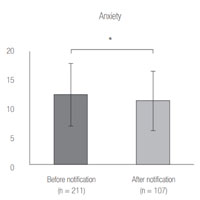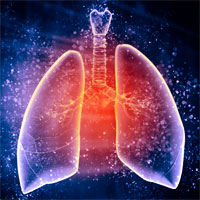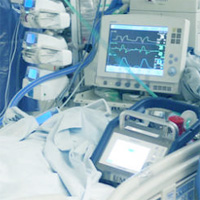Tag: mortality

Five-Year Survival and Causes of Death in Children After Intensive Care
There was an increased risk of death in a cohort of ICU-admitted children even 3 years after discharge. In those who survived 30 days after discharge, medical causes of death were dominant, whereas deaths due to trauma were... read more

Data Analysis Shows ICU Scores Accurate in Predicting Risk of Death
Using clinical data from more than 200 hospital intensive care units, Philips Healthcare has shown that three ICU risk scores—designed for different purposes—performed well as a marker of severity of illness at admission... read more

The Effects of a Delirium Notification Program on the Clinical Outcomes of the ICU
Increasing the physician's awareness of the patient's mental state by using a notification program could reduce the anxiety of ICU patients even though it may not reduce delirium. The results suggested that the method of... read more

Translating Evidence Into Practice in ARDS
Although the treatment of the acute respiratory distress syndrome (ARDS) with low tidal volume (LTV) mechanical ventilation improves mortality, it is not consistently administered in clinical practice. This review examines... read more

Temporal Trends in Incidence, Sepsis-Related Mortality, and Hospital-Based Acute Care After Sepsis
Owing to increasing incidence and declining mortality, the number of sepsis survivors at risk for hospital readmission rose significantly between 2010 and 2015. The 30-day hospital readmission rates for sepsis declined modestly... read more

Procalcitonin Testing to Guide Antibiotic Therapy in Acute Upper and Lower Respiratory Tract Infections
Is the use of procalcitonin for guiding antibiotic decisions in patients with acute upper and lower respiratory tract infections associated with improved clinical outcomes compared with usual care? Among patients with varying... read more

The Speed of Sound: A New Measure to Single Out High-Risk PE Patients
Predicting which pulmonary embolism patients will do well with oral anticoagulation and which will decompensate is a bit murky, at best. The treatment of pulmonary embolism (PE) has evolved quite a bit in just the past few... read more

Survival Benefit of a Low Ratio of Visceral to Subcutaneous Adipose Tissue Depends on LDL Clearance vs. Production in Sepsis
Patients with sepsis with a high ratio of visceral adipose tissue (VAT) to subcutaneous adipose tissue (SAT) have increased mortality. Our goal was to investigate the mechanism of this effect, noting that low LDL levels are... read more

Prehospital Antibiotics Improved Some Aspects of Sepsis Care
Training EMS personnel in early recognition of sepsis improved some aspects of care within the acute care chain, but did not reduce mortality, according to results of a randomized trial. Emergency medical service (EMS) personnel... read more

Hyperoxia and Hypocapnia During Pediatric ECMO
Hyperoxia is common during pediatric extracorporeal membrane oxygenation (ECMO) and associated with mortality. Hypocapnia appears to occur less often and although associated with complications, an association with mortality... read more

Pediatric Sepsis Endotypes Among Adults With Sepsis
Recent transcriptomic studies describe two subgroups of adults with sepsis differentiated by a sepsis response signature. The implied biology and related clinical associations are comparable with recently reported pediatric... read more

The Inflammatory Response to ECMO
Extracorporeal membrane oxygenation (ECMO) is a technology capable of providing short-term mechanical support to the heart, lungs or both. Over the last decade, the number of centres offering ECMO has grown rapidly. At the... read more

Too Much SALT on the ICU?
There has a been a little flutter of activity in the #FOAMed world this week about two trials published in the NEJM on the subject of balanced fluids in the care of critically ill patients, and also on admitted patients in... read more

Comparison of Etomidate and Ketamine for Induction During Rapid Sequence Intubation of Adult Trauma Patients
Induction doses of etomidate during rapid sequence intubation cause transient adrenal dysfunction, but its clinical significance on trauma patients is uncertain. Ketamine has emerged as an alternative for rapid sequence intubation... read more




